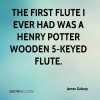Hello,
I bought this clarinet on impulse, cheaply, at a local charity shop. My goal is to repair it and have a go at learning to play it. Question: is it a standard design? suitable for me to start with? I can't seem to match it with pictures I have viewed online, so wonder if it's maybe more of a vintage item? There is a name 'potter' but Im not getting to far with this. What opinions do others have on this instrument ? All responses would be welcome.
I bought this clarinet on impulse, cheaply, at a local charity shop. My goal is to repair it and have a go at learning to play it. Question: is it a standard design? suitable for me to start with? I can't seem to match it with pictures I have viewed online, so wonder if it's maybe more of a vintage item? There is a name 'potter' but Im not getting to far with this. What opinions do others have on this instrument ? All responses would be welcome.








